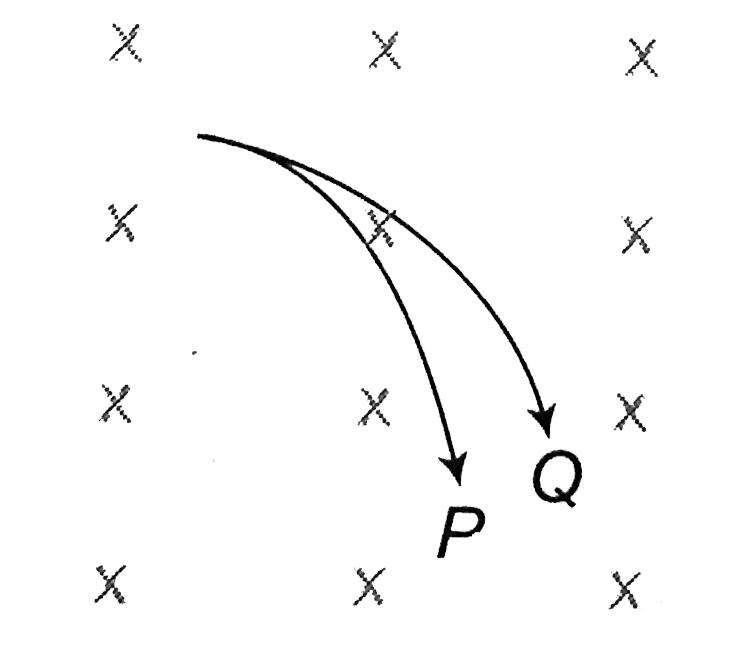Induced charge q can never be greater than inducing charge Q. Why ?
Video Solution
Text Solution
When a charged rod (inducing body) is held near one end, but the flow of electron ceases after some-time (though there is an almost inexhaustible supply of electrons in the metal sphere) because induced electrons repel movement of fresh electrons getting induced.
|
Updated on:21/07/2023
Similar Questions
Knowledge Check
- Question 1 - Select One
Two charged particles P and Q enter a uniform magnetic field normally with the same speed. Their paths in the field are as shown in the figure. It can be concluded that

(i) the charge of P is greater than of Q
(ii) specific charge of P is > that of Q
(iii) both P and Q are positively charged
(iv) both P and Q are negatively chargedA(i), (ii)B(ii), (iv)C(ii), (iii)D(i), (iv) - Question 2 - Select One
Statement - I : When two charged spheres are touched, then total charge is always devides equally.
Statement - II : Induced charge always equal to inducing charge.AIf both Statement-I and Statement-II are true, and Statement-II is the correct explanation of Statement -I.BIf both Statement-I and Statement-II are true but Statement-II is not the correct explanation of Statement -I.CIf Statement -I is true but Statement-II is falseDIf Statement-I is false but Statement -II is true - Question 3 - Select One
Which of following result gives correct relation between charge induced (q) and inducing charge (q0) : -
Aq0=q(1−1∈r)Bq=q0(1−1∈r)Cq+q0=1∈rDq=q0(1−∈r)
The +q charge can be neutralised by
View SolutionIf only one charge is availabel, can it be used to obtain a charge many times greater than itself in magnitude?
View Solutionprove that the charge induced does not depend on the rate of change of magnetic flux.
View SolutionInduced Charge On The Surface Of Dielectric
View SolutionAn insulated conductor initiallly free from charge is charged by repeated contacts with a plate which after each contact is replenished to a charge Q. If q is the charge on the conductor after first operation prove that the maximum charge which can be given to the conductor in this way is QqQ−q
View Solution

